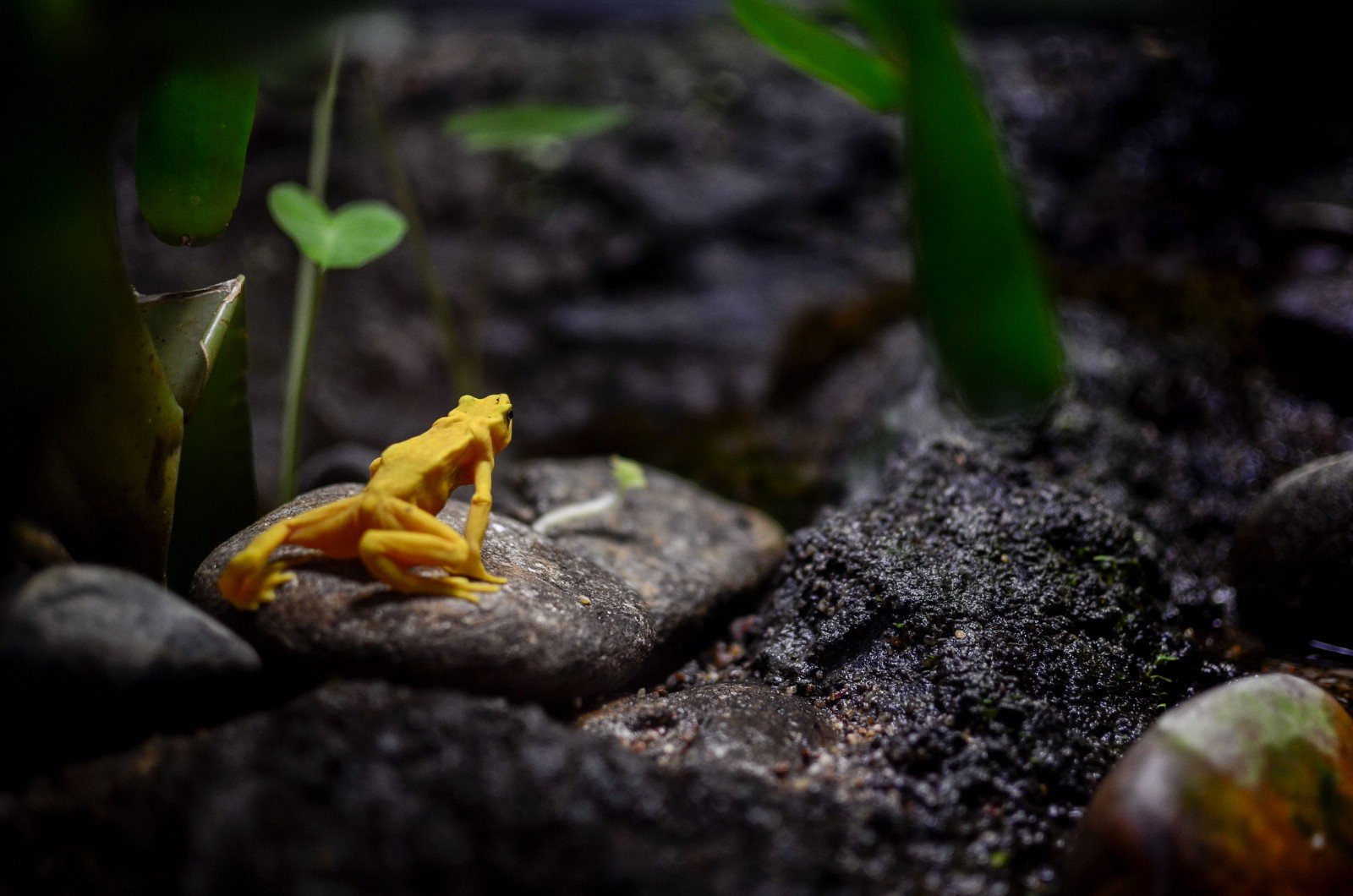The Colorful World of Yellow Frogs: An Overview of their Biology, Ecology, and Reproduction

Yellow frogs are a fascinating and bright amphibian species found all over the world. This paper will go into their biology, food, environment, and reproduction.
Biology
Yellow frogs are members of the Dendrobatidae family, which comprises over 200 species of vividly colored poison dart frogs. They are little, ranging in length from 1 to 5 cm, with males being somewhat smaller than females. They have smooth skin and can be found in a variety of hues like as yellow, orange, green, and blue.
Yellow frogs are diurnal, which means they are awake during the day and sleep at night. They are great climbers and can be found in a range of environments such as rainforests, deserts, and grasslands.
Yellow frogs are carnivorous, eating insects such as ants, termites, and beetles. They have also been observed eating small spiders, snails, and other invertebrates. Yellow frogs catch their prey with their long, sticky tongues, which they subsequently consume whole.
Ecosystem
Yellow frogs play a crucial role in their environment. As predators, they aid in the management of bug and other tiny invertebrate populations. They are also a source of food for larger predators like birds and snakes.
Yellow frogs can be found in a number of environments, including rainforests, where they can be found on the forest floor, in trees, and in water. They can also be found in deserts and grasslands, living in burrows or under rocks.
Reproduction
Yellow frogs use an unusual reproduction technique. To attract a partner, males will defend their area and make a series of sounds. When a female is interested, the male will guide her to an appropriate egg-laying location. The female will lay a clutch of eggs, which will be fertilized by the male.
Yellow frogs are well-known for providing parental care. The male will defend the eggs and urinate on them to keep them wet. Once the eggs hatch, the male will carry the tadpoles to a water source, such as a pond or stream, on his back. Over the course of several weeks, the tadpoles will mature into frogs.
Finally, yellow frogs are a remarkable amphibian species that play an important part in their ecology. They are small, colorful, carnivorous, and eat mostly insects. They live in a range of settings, including rainforests, deserts, and grasslands, and they have an unusual reproduction strategy that requires parental care. To ensure the future survival of these species, as with all others, their habitats must be protected and preserved.